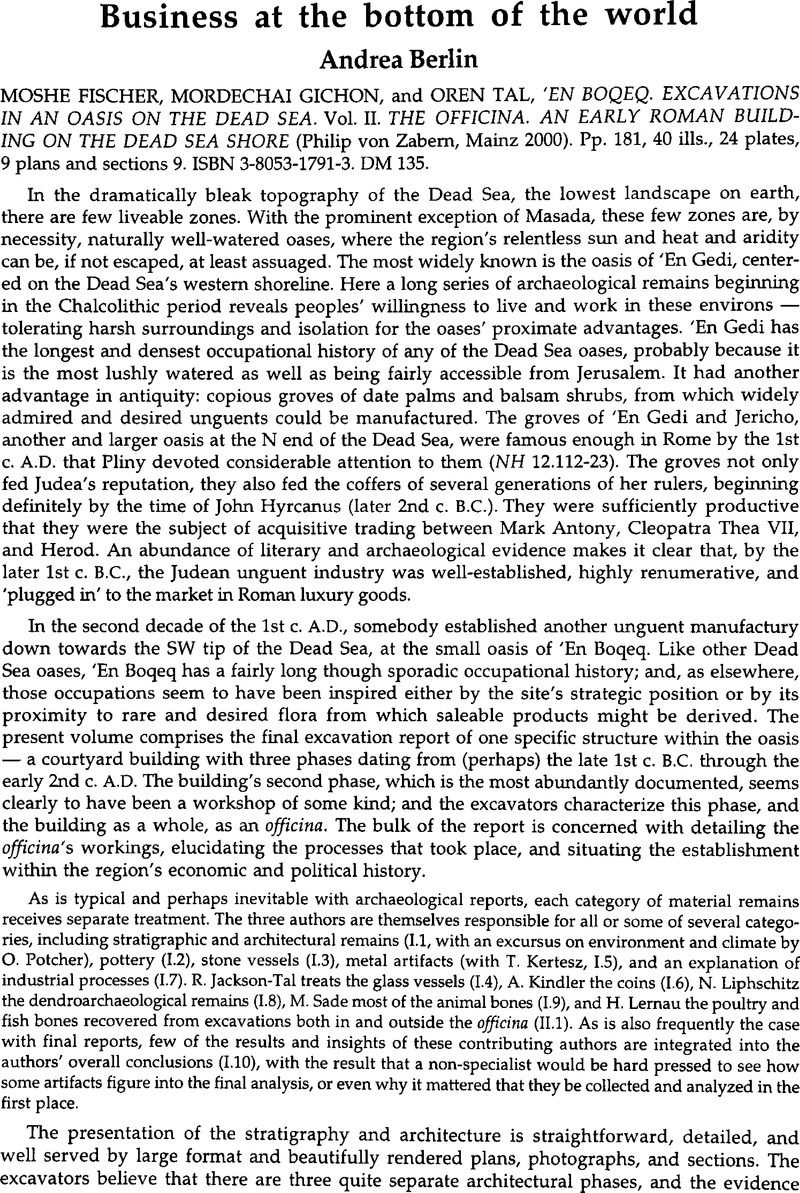No CrossRef data available.
Article contents
Business at the bottom of the world - Moshe Fischer, Mordechai Gichon, and Oren Tal, ‘EN BOQEQ. EXCAVATIONS IN AN OASIS ON THE DEAD SEA. Vol. II. THE OFFICINA. AN EARLY ROMAN BUILDING ON THE DEAD SEA SHORE (Philip von Zabem, Mainz 2000). Pp. 181, 40 ills., 24 plates, 9 plans and sections 9. ISBN 3-8053-1791-3. DM 135.
Published online by Cambridge University Press: 16 February 2015
Abstract

- Type
- Reviews
- Information
- Copyright
- Copyright © Journal of Roman Archaeology L.L.C. 2002
References
1 Meshorer, Y., Nabataean coins (Jerusalem 1975) 57–59 Google Scholar.
2 Cahill, J., “Chalk vessel assemblages of the Persian/Hellenistic and Early Roman periods,” in de Groot, A. and Ariel, D. T. (edd.), Excavations at the City of David 1978-1985, vol. III. Stratigraphical, environmental and other reports (Jerusalem 1992) 190–274 Google Scholar.
3 See most recently Kanellopoulos, C., “The architecture of the shops and colonnaded street in Petra,” BASOR 324 (2001) 9–22 Google Scholar; Bedal, L., “A pool complex in Petra's city center,” Basor 324 (2001) 23–41 Google Scholar; Joukowsky, M. and Basile, J. J., “More pieces in the Petra Great Temple puzzle,” Basor 324 (2001) 43–58 Google Scholar.
4 See Bedal ibid. 37-38.
5 Millar, F., The Roman Near East 31 BC–AD 337 (London 1993) 403–5Google Scholar; Isaac, B., “The Babatha Archive,” The Near East under Roman rule. Selected papers (Leiden 1998) 159–81Google Scholar. On the location of Maoza, see Broshi, M., “Agriculture and economy in Roman Palestine: seven notes on the Babatha Archive,” IEJ 42 (1992) 232 Google Scholar.
6 Isaac ibid. 168; this is Babatha papyrus no. 16.
7 Negev, A., “The Nabateans and the Provincia Arabia,” ANRW II.8 (1977) 567–634 Google Scholar.
8 Ibid. 571-84, esp. 583.
9 Ibid. 583.


